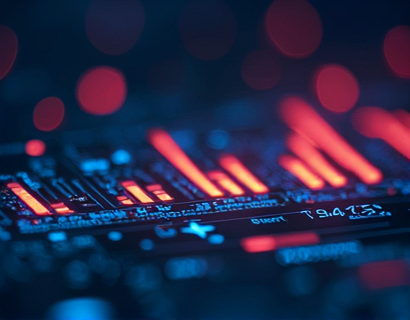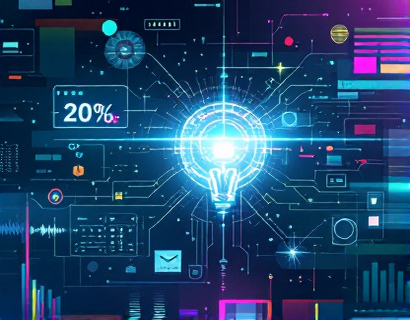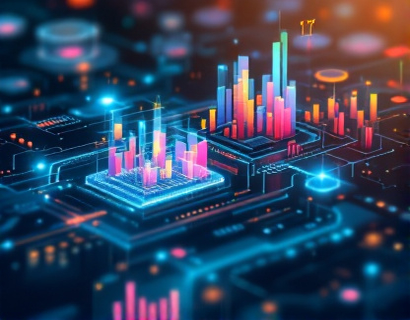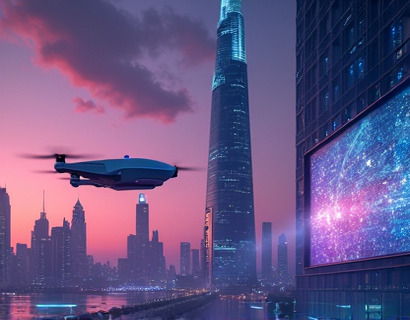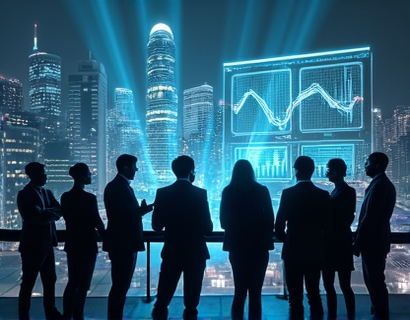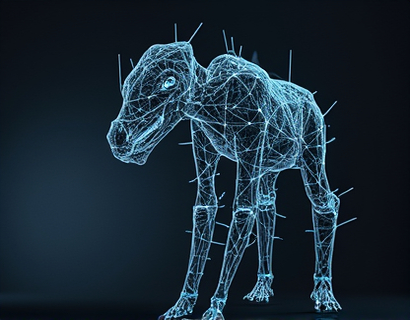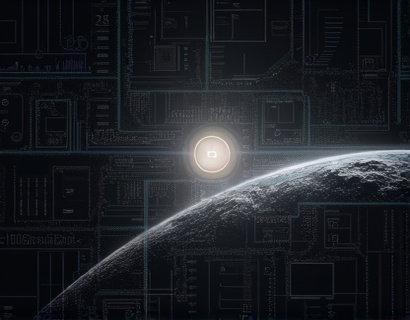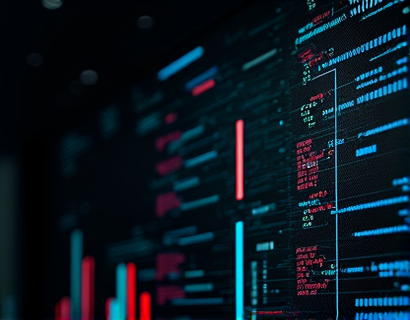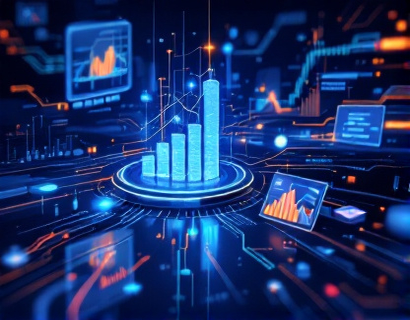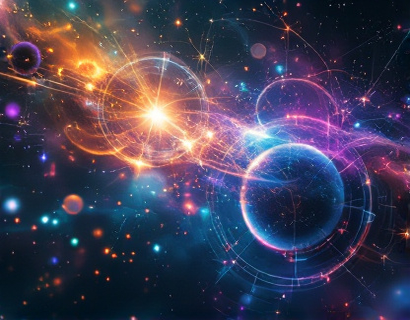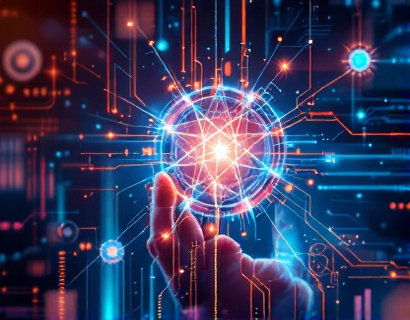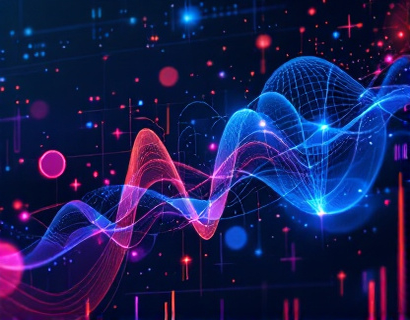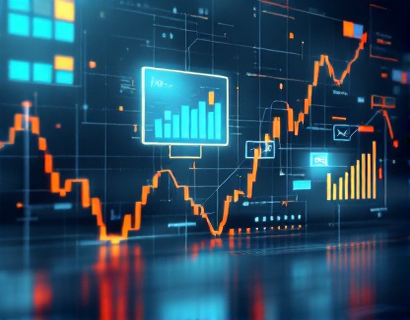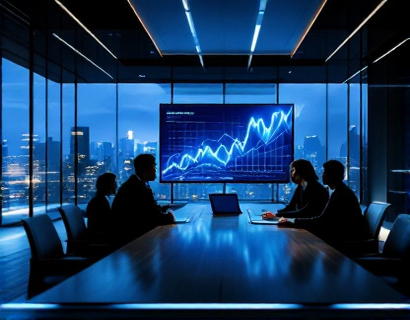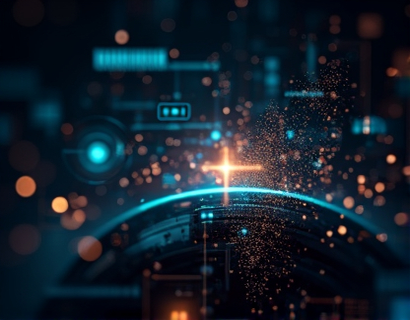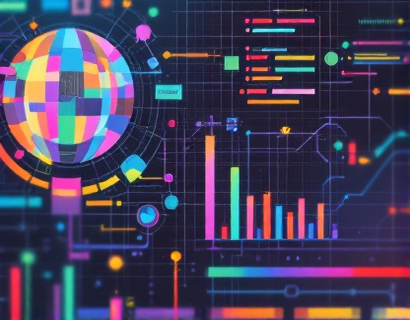Revolutionizing Digital Transformation: The Synergy of AI and Crypto
The intersection of artificial intelligence and cryptocurrency is ushering in a new era of digital transformation, one that promises to redefine how we interact with technology and each other. This convergence is not just a technological advancement but a paradigm shift that is reshaping the very fabric of digital ecosystems. As we delve into this topic, it's essential to understand the fundamental components that drive this revolution: blockchain technology and machine learning.
Blockchain, the underlying technology behind cryptocurrencies, is more than just a ledger for digital transactions. It is a decentralized, transparent, and secure system that ensures data integrity and trust without the need for intermediaries. This technology has the potential to disrupt various industries by providing a robust framework for secure and efficient data management. On the other hand, machine learning, a subset of artificial intelligence, enables systems to learn from data, identify patterns, and make decisions with minimal human intervention. When these two powerful technologies are combined, the possibilities for innovation become virtually limitless.
Blockchain: The Backbone of Decentralized Systems
Blockchain technology operates on a distributed ledger that records transactions across multiple computers in such a way that the registered transactions cannot be altered retroactively. This immutability is achieved through cryptographic hashing, which links each block of data to the previous one, forming a chain. The decentralized nature of blockchain means that no single entity has control over the entire network, reducing the risk of centralized points of failure and enhancing security.
The applications of blockchain extend far beyond cryptocurrencies. In the realm of supply chain management, blockchain can provide end-to-end transparency, allowing businesses to track products from origin to destination with unprecedented accuracy. In the healthcare sector, blockchain can secure patient data, ensuring privacy and compliance with regulations while enabling seamless data sharing among healthcare providers. Smart contracts, self-executing contracts with the terms directly written into code, further automate and streamline processes, reducing the need for intermediaries and lowering costs.
Machine Learning: The Brain Behind the Digital Transformation
Machine learning algorithms are designed to improve their performance over time without being explicitly programmed. These algorithms can analyze vast amounts of data, identify patterns, and make predictions or decisions based on that data. In the context of digital transformation, machine learning can enhance user experiences, optimize operations, and drive innovation across various sectors.
In finance, machine learning is used for fraud detection, risk assessment, and algorithmic trading. In marketing, it powers personalized recommendations and customer segmentation. In the Internet of Things (IoT), machine learning enables devices to learn from their environment and adapt their behavior accordingly. The integration of machine learning with blockchain can create even more powerful and intelligent systems, capable of self-improvement and autonomous decision-making.
Synergy of Blockchain and Machine Learning
The true potential of digital transformation is realized when blockchain and machine learning are combined. This synergy creates a feedback loop where machine learning algorithms can process and analyze data stored on a blockchain, while the blockchain provides a secure and transparent environment for the machine learning models to operate. This combination can lead to more accurate predictions, enhanced security, and greater trust in digital systems.
One of the key areas where this synergy shines is in data privacy and security. Machine learning models require large datasets to function effectively, but the collection and storage of such data raise significant privacy concerns. Blockchain can address this by providing a decentralized and encrypted way to store and share data, ensuring that sensitive information remains protected while still being accessible for analysis. This approach not only enhances privacy but also builds trust among users who are increasingly concerned about data security.
Another area of convergence is in the realm of decentralized finance (DeFi). Machine learning can optimize trading strategies, manage risks, and automate financial decisions within a DeFi ecosystem. Blockchain ensures that these transactions are transparent, secure, and tamper-proof. This combination can lead to more efficient and accessible financial services, democratizing access to capital and financial tools.
Enhancing User Experiences with AI and Blockchain
The integration of AI and blockchain can significantly enhance user experiences across various applications. For instance, in digital identity management, a blockchain-based system can store and verify user identities securely, while machine learning can enhance the authentication process by recognizing patterns and behaviors to prevent fraud. This dual approach not only improves security but also simplifies the user experience by reducing the need for multiple passwords and verification steps.
In the realm of customer service, chatbots powered by machine learning can provide instant and personalized assistance to users. When these chatbots are built on a blockchain, they can maintain a transparent and immutable record of interactions, ensuring accountability and building trust. This combination can revolutionize how businesses interact with their customers, offering a seamless and trustworthy experience.
Innovative Applications in Various Industries
The convergence of AI and blockchain is not limited to finance and technology sectors; it is transforming industries across the board. In the arts, blockchain can ensure the authenticity and provenance of digital art, while machine learning can create unique and dynamic art pieces based on user preferences and trends. This fusion can open new avenues for artists and collectors alike, creating a more transparent and engaging market.
In the real estate sector, blockchain can streamline property transactions by providing a transparent and secure record of ownership and transactions. Machine learning can analyze market data to predict trends and optimize property valuations. This combination can make real estate transactions more efficient, reducing costs and increasing transparency.
In the supply chain industry, blockchain can track the movement of goods from production to delivery, ensuring authenticity and quality. Machine learning can optimize logistics by predicting demand, managing inventory, and identifying bottlenecks. This synergy can lead to more resilient and efficient supply chains, benefiting businesses and consumers alike.
Challenges and Considerations
While the potential of AI and blockchain is vast, there are several challenges that need to be addressed to fully realize this synergy. One of the primary concerns is scalability. Blockchain networks, particularly those using proof-of-work consensus mechanisms, can be slow and resource-intensive. Machine learning models, especially deep learning algorithms, require significant computational power and data storage. Developing more efficient and scalable blockchain solutions that can support the demands of machine learning is crucial for widespread adoption.
Another challenge is regulatory uncertainty. The rapid evolution of both AI and blockchain technologies often outpaces regulatory frameworks, leading to a patchwork of rules and guidelines. Clear and consistent regulations are necessary to foster innovation while protecting consumers and ensuring ethical use of these technologies.
Interoperability is another key issue. For AI and blockchain to reach their full potential, different systems and platforms need to work together seamlessly. Standardization efforts and open protocols can help bridge the gap between various blockchain networks and machine learning frameworks, enabling a more integrated and cohesive digital ecosystem.
Future Outlook: The Next-Gen Digital Landscape
As AI and blockchain continue to evolve, the next generation of digital solutions will be characterized by increased automation, enhanced security, and greater user empowerment. The integration of these technologies will lead to the development of smart cities, where infrastructure and services are optimized through real-time data analysis and autonomous decision-making. In healthcare, AI-driven diagnostics combined with blockchain-based patient records can revolutionize patient care, making it more personalized and efficient.
The rise of decentralized applications (dApps) powered by blockchain and enhanced by machine learning will redefine how we interact with digital services. These dApps can offer decentralized versions of traditional services, from social media to gaming, with enhanced privacy and security features. The potential for innovation is vast, and the next few years will likely see significant advancements in this space.
In conclusion, the convergence of AI and blockchain is not just a technological trend but a fundamental shift in how we approach digital transformation. By leveraging the strengths of both technologies, we can create more secure, efficient, and user-friendly digital solutions that empower individuals and businesses alike. As we move forward, it is essential to address the challenges and continue pushing the boundaries of what is possible in this exciting and rapidly evolving landscape.





